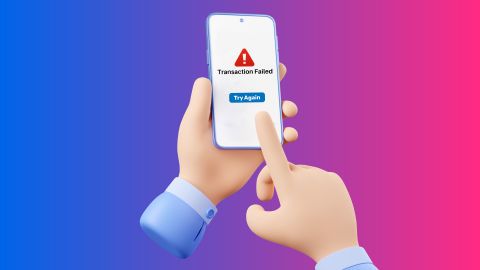Get detailed insights into the types of optical fibre like multimode, single-mode, and others. Understand their applications in various industries and how they drive future communication technology.
Types of optical fibre
-
-
Optical fibre is a technology that enables the transmission of data as light pulses through thin strands of glass or plastic. This method of communication has revolutionised the way information is transmitted over long distances, offering higher bandwidth and faster speeds compared to traditional copper cables. Optical fibre is essential for modern telecommunications, internet connectivity, and various industrial applications due to its ability to carry large amounts of data with minimal signal loss and interference. As the demand for high-speed internet continues to grow, optical fibre technology plays a crucial role in supporting this need.
For those managing their broadband services, platforms like Bajaj Pay facilitate easy online transactions for tasks such as broadband bill payments.
For those managing their broadband connections, platforms like Bajaj Pay facilitate easy online transactions for services such as broadband bill payments.What is optical fibre
Optical fibre consists of a core, cladding, and protective outer layer. The core is the central part where light travels, while the cladding reflects light back into the core, allowing it to propagate along the fibre. This technology utilises total internal reflection to transmit data over long distances with minimal attenuation. Optical fibres can be made from glass or plastic and are classified into two main types: single-mode and multimode fibres. Each type serves different applications based on distance and bandwidth requirements.Types of optical fibre
Optical fibres can be categorised based on their design and intended use:
Single-mode fibre (SMF): Designed for long-distance communication.
Multimode fibre (MMF): Suitable for shorter distances due to its larger core diameter (50 to 62.5 micrometres).
Non-dispersion-shifted fibre: A type of multimode fibre designed to minimise chromatic dispersion.
Dispersion-shifted fibre: Specifically engineered to shift the zero-dispersion wavelength closer to the operating wavelength.Fibre applications and use cases
Optical fibres have a wide range of applications across various industries:- Telecommunications: Used for high-speed internet connections and telephone networks, enabling faster data transfer rates.
- Medical: Employed in endoscopy and other imaging techniques, allowing doctors to view internal organs without invasive procedures.
- Industrial: Utilised in sensors and inspection systems for monitoring equipment performance and safety.
- Broadcasting: Facilitates high-quality audio and video transmission over long distances.
- Lighting: Used in decorative lighting applications due to their flexibility and ability to transmit light efficiently.
Advantages of optical fibre over copper cables
Optical fibre offers several advantages compared to traditional copper cables:- Higher bandwidth: Capable of carrying significantly more data at higher speeds.
- Longer distances: Can transmit signals over much longer distances without degradation.
- Reduced interference: Immune to electromagnetic interference, ensuring clearer signals.
- Lightweight and flexible: Easier to install due to its lightweight nature and flexibility.
- Lower maintenance costs: Generally requires less maintenance than copper systems.
Applications of optical fibre in modern communication
In modern communication systems, optical fibres are essential for:- Internet infrastructure: Backbone for global internet connectivity, enabling high-speed data transfer across continents.
- Data centres: Connecting servers within data centres for efficient data management and storage solutions.
- Cloud computing: Facilitating rapid data exchange between cloud services and users.
- Smart cities: Supporting IoT devices that require reliable connectivity for real-time data processing.
Future trends in optical fibre technology
The future of optical fibre technology includes several promising trends:
Increased capacity: Ongoing research aims to enhance the capacity of optical fibres to support even higher data rates.
Integration with 5G networks: Optical fibres will play a crucial role in supporting the infrastructure needed for 5G technology.
Advanced manufacturing techniques: Innovations in production methods will improve cost-effectiveness and performance consistency.
Sustainable solutions: Development of eco-friendly materials for optical fibres will align with global sustainability goals.Comparison of different types of optical fibre
Type Core diameter Distance range Applications Single-Mode Fiber (SMF) ~9 micrometers Long-distance Telecommunications Multimode Fiber (MMF) 50-62.5 micrometers Short-distance Local area networks Non-dispersion-shifted Varies Moderate-distance High-bandwidth applications Dispersion-shifted Varies Long-haul communication High-speed networks
This table summarises the key differences between various types of optical fibres, highlighting their specific characteristics and uses.How to choose the right type of optical fibre
When selecting an optical fibre type, consider the following factors:
Distance requirements: Determine how far the signal needs to travel; single-mode fibres are better for long distances while multimode fibres suit shorter runs.
Bandwidth needs: Assess the amount of data that will be transmitted; higher bandwidth applications may require single-mode fibres.
Installation environment: Consider physical space constraints; multimode fibres may be easier to handle in confined spaces due to their larger core diameter.
Cost considerations: Evaluate budget constraints; multimode fibres are generally less expensive than single-mode options but may not meet all performance needs.
By considering these factors, you can select the most appropriate optical fibre type for your specific application.Steps to pay your broadband bill online on the Bajaj Finserv website
Paying the broadband bill through the Bajaj Finserv website is simple. Here are the steps:1. Visit the Bajaj Finserv website
2. Navigate to ‘ALL PAYMENTS’ under the ‘PAYMENTS’ section and click on it
3. Select the ‘BROADBAND POSTPAID’ option from under ‘BILLS & RECHARGES’
4. A pop-up will request for sign-in, enter your mobile number and click on ‘GET OTP’ to login
5. Select your service provider from the list of broadband service providers
6. Enter your ‘CUSTOMER ID’ and click on ‘FETCH YOUR BILL’
7. Verify the bill amount and click on ‘PAY NOW’
8. Pay using the multiple payment methods available such as Bajaj Pay UPI, debit card, credit card, net banking, and Bajaj Pay Wallet.
Post the transaction you will be receiving a confirmation to intimate about successful payment.Fees and charges
A convenience fee of up to 2% will be charged depending on the transaction amount and payment mode (inclusive of applicable taxes). For more information on fees and charges, click here.Note: For failed transactions, the total amount including charges except taxes are reversed.
-
Recharge and Pay Bills
Mobile Prepaid
Mobile Postpaid
Broadband Bill Payment
Electricity Bill Payment
Bajaj Finserv App for All Your Financial Needs and Goals
Trusted by 50 million+ customers in India, Bajaj Finserv App is a one-stop solution for all your financial needs and goals.
You can use the Bajaj Finserv App to:
Apply for loans online, such as Instant Personal Loan, Home Loan, Business Loan, Gold Loan, and more.
Explore and apply for co-branded credit cards online.
Invest in fixed deposits and mutual funds on the app.
Choose from multiple insurance for your health, motor and even pocket insurance, from various insurance providers.
Pay and manage your bills and recharges using the BBPS platform. Use Bajaj Pay and Bajaj Wallet for quick and simple money transfers and transactions.
Apply for Insta EMI Card and get a pre-approved limit on the app. Explore over 1 million products on the app that can be purchased from a partner store on Easy EMIs.
Shop from over 100+ brand partners that offer a diverse range of products and services.
Use specialised tools like EMI calculators, SIP Calculators
Check your credit score, download loan statements and even get quick customer support—all on the app.
Download the Bajaj Finserv App today and experience the convenience of managing your finances on one app.
You can use the Bajaj Finserv App to:
Apply for loans online, such as Instant Personal Loan, Home Loan, Business Loan, Gold Loan, and more.
Explore and apply for co-branded credit cards online.
Invest in fixed deposits and mutual funds on the app.
Choose from multiple insurance for your health, motor and even pocket insurance, from various insurance providers.
Pay and manage your bills and recharges using the BBPS platform. Use Bajaj Pay and Bajaj Wallet for quick and simple money transfers and transactions.
Apply for Insta EMI Card and get a pre-approved limit on the app. Explore over 1 million products on the app that can be purchased from a partner store on Easy EMIs.
Shop from over 100+ brand partners that offer a diverse range of products and services.
Use specialised tools like EMI calculators, SIP Calculators
Check your credit score, download loan statements and even get quick customer support—all on the app.
Download the Bajaj Finserv App today and experience the convenience of managing your finances on one app.
Frequently asked questions
What are the advantages of optical fibre?
Optical fibre has high data transfer speeds, longer transmission distances, reduced interference, and lower maintenance costs.
How is optical fibre used in medical applications?
Optical fibres are used in endoscopy and other imaging techniques for non-invasive internal examinations.
What is the role of optical fibre in modern communication?
It forms the backbone of internet infrastructure, data centres, cloud computing, and smart cities, enabling high-speed communication.
What are the future trends in optical fibre technology?
Research is focused on increasing capacity, integrating with 5G networks, improving manufacturing techniques, and creating eco-friendly materials.
How do you choose the right type of optical fibre?
Consider factors like distance, bandwidth needs, installation environment, and cost when selecting the appropriate optical fibre for your needs.
Show More
Show Less




